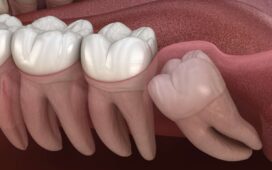Phenylketonuria is a disorder that has serious consequences if it is not detected and treated in time, with a diet that provides the exact amount of phenylalanine necessary for the growth and repair of the patient’s tissues.
The PKU is an inherited disease also called PKU, which consists of an alteration of metabolism. The body cannot break down an amino acid called phenylalanine, which is found in most foods. This means that the body cannot metabolize the amino acid tyrosine formed from phenylalanine in the liver.
The PKU is a disease of very low incidence, about one in 15,000 births.
Its inheritance is autosomal recessive. That is, the mutation of the phenylalanine hydroxylase gene must be inherited from both parents. This happens because people with phenylketonuria lack the enzyme phenylalanine hydroxylase (FAOH), which causes an increase in the blood concentration of phenylalanine by preventing it from being converted to tyrosine.
Furthermore, due to this deficiency, an alternative metabolic pathway is activated that produces a series of components: phenylpyruvate, phenylacetate, and phenylacetate. These components are harmful to the body and cause damage to the central nervous system and the brain.
The prognosis is possible if it is detected properly and early. Treatment is instituted on time, fundamentally based on following a strict diet low in phenylalanine in the first year of the child’s life. A diet will probably have to be followed for a lifetime to avoid or lessen mental damage during its growth stage.
Causes of phenylketonuria
The fundamental cause of phenylketonuria (PKU) is phenylalanine hydroxylase deficiency. This conditions that the conversion of phenylalanine to tyrosine is altered, and therefore there is an increase in the blood of phenylalanine and its products, mainly phenylacetate and phenylacetate. Tyrosine levels can remain normal or low in PKU patients.
The consequences of this metabolic alteration are that high levels of phenylalanine will negatively interfere with the brain’s growth and maturity, in the production of nerve transmitters, and myelination (a fundamental substance for the proper functioning of nerve connections).
Neurological and brain development are also interfered with by elevated phenylalanine metabolites (phenylacetate and phenylacetate). All these substances above the desirable values condition an alteration of intellectual development.
As intellectual development and brain maturity occur throughout childhood, it is at this stage, and, consequently, the alterations described that the symptoms of phenylketonuria would be appreciated.
Symptoms of phenylketonuria
The baby with phenylketonuria is born after a normal and uncomplicated pregnancy and appears healthy in the first months of life. However, vomiting has been reported in these children, and unusual irritability is observed in one-third of them.
The symptoms of phenylketonuria first become apparent a few weeks after birth. The disease begins with an elevation in the plasma of phenylalanine, which reaches a level 30 times higher than normal, and with the excretion of phenyl pyruvic acid in the urine. Phenylpyruvate seriously damages the brain during growth and development.
Between three and six months, babies lose interest in the environment, and after six months, the delay in mental development is evident. After a year, it is found that there is a significant delay in its development. Most patients are severely or profoundly deficient, and medium deficiency is occasionally reached.
The symptoms that babies with phenylketonuria present are usually:
- Psychomotor retardation.
- Autistic-type psychotic pictures.
- Seizures
- West syndrome.
- Very unruly facial eczema.
- Noticeably smaller than normal head size.
- Jerky movements of arms and legs.
- Mental retardation.
- Tremors
- The unusual posture of the hands.
They have a characteristic smell of wet straw, and their physical development is generally good. Furthermore, phenylalanine is involved in melanin production, which is the pigment responsible for skin and hair color, so affected children tend to have lighter hair and skin than their siblings.
In certain patients, a tendency to acrocyanosis (bluish discoloration of the hands and feet) can also be found.









